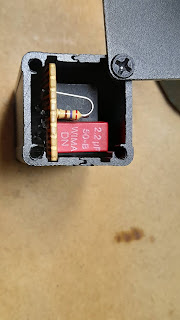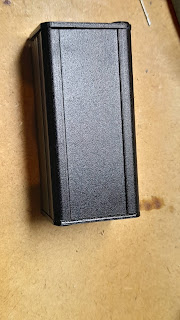There seems to be an increase in the transmit bandwidth range for SSB communications, which traditionally operates within a narrow-band of approximately 3 kHz. Now if we go with a 3 khz “Voice channel” for Single Side Band (SSB) then the Transmitted Bandwidth, let's call it the TxBW, should fit into the range 0-3000 kHz.
However, I’ve noticed more and more operators use a TxBW of 4 kHz or more. This is often referred to as Extended Single Side Band (ESSB) which I have seen to extend in some instances even to 5 kHz and more. The claim to fame is HiFi Audio.
Now Amateur Radio is an experimental hobby, so this, on the surface, shouldn’t irk anyone, shouldn’t it? However, I frequently encounter ESSB operators on 20 and 40m talking to operators who have not modified their station for ESSB communications, i.e. a station with a TxBW 5 kHz to a station with a 3 kHz Receiver Bandwidth, lets call that RxBW.
So what seems to be the issue?
Let's say a QSO is conducted on 14.229 MHz, one operator uses a TxBW of 2.9 khz and the other uses a TxBW of 2.4 kHz. Signal are good with about S7 both ways. Since this is conducted using the Upper Side Band and, if we apply a Voice Channel spectrum of 3 kHz the used frequency spectrum for that QSO is from 14.229 – 14.231 MHz (not quite but let's stick with 3 kHz). Stations operating on 14.232 MHz should not have any issues operating. However, let's assume one of the operators is operating at a TxBW of 5 kHz. This situation would infringe stations operating on 14.232 MHz quite badly. Another example would be if a DX station is calling on 14.232 MHz and I would like to work that station. However, I will be unable to do so due to the excessive TxBW of the ESSB operator (14.229 - 14.234 MHz).
Anyone see an issue here? Well, I do! However, the question is does the ESSB operator see the issue? From my experience most ESSB operators do not.
So why use 5 kHz TxBW whilst conducting DX contacts. Aren't we trying to share the limited frequency spectrum between all Amateurs? There is certainly NO benefit to the station receiving the ESSB station.
Frequency spectrum during “openings” are crowded and transmitting with a 5 kHz TxBW during these opening does not show any courteousey towards other spectrum users.
The above shows an Australian Operators transmission with a TxBW of 5 kHz and the DX station using a less than 3 kHz “Voice Channel”. I will assume that the DX stations RxBW would not be more than it's TxBW.
NOTE: I’m referring to the TxBW and not the Intermodulation Products (IM) or “splatter”, e.g. the light blue “hair or whiskers” on either side of the signal, which are obvious related but are not discussed here.
This is even more frustrating on the 40m Band, as there are more an more local stations operating with a TxBW of greater than 4 kHz.
Now Amateur Radio is an experimental hobby and experimenting with a TxBW > 3 kHz does fall under this category. So, yes I believe in experimenting but this is not experimenting, this is not understanding the implication of excessive TxBW. And believe me I’m all for experimenting. However, I am quite happy with a 2.4 kHz well balanced audio TxBW which would influence the use of an appropriate RxBW.
Additionally I believe that these operator would not know how much "real" power they are transmitting. If we talk about 400W PEP, then the average output power would be rather LOW.
NOTE: I also observed that these type of operators seem to drop their TxBW to 3 kHz during Contests!?! Yet they seem to believe that during crowded DX sessions it is OK to use 5 kHz or more TxBW. Isn't that a bit hypocritical?
Since Amateur Radio is a self regulating hobby it might be about time to add a frequency spectrum for those inclined to use ESSB. I believe this has been done for certain other modulation schemes (AM/FM/DIGITAL).












